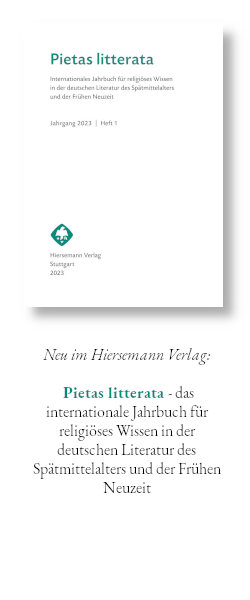Gesammelte Heiligkeiten. Religiöse Leitbilder und Sammlungspraktiken in zisterziensischen Legendaren des Hoch- und Spätmittelalters
DOI:
https://doi.org/10.36191/mjb/2021-56-3-1Schlagworte:
hagiography, legendary, composite manuscripts, Cistercians, Latinand vernacularAbstract
Andreas Bihrer / Julia Weitbrecht: Collected sanctities. Religious role-models and practices of collecting in Cistercian legendaries of the High and Late Middle Ages
The article focuses on the correlation between narrating sanctity in medievalsaints’ legends and collecting these legends in large compilations (›legendaries‹) in the Cistercian order throughout the Middle Ages. By focusing on the specificinterests behind the various collections, we aim to identify the historical processes that created the religious identities of medieval saints beyond their individual legendary narratives. The compilers employed a variety of religious role-models in order to shape the specific religious profiles within the legendaries.The first part of the article focuses on the compilation of legendary texts in the Cistercian monasteries of Cîteaux and Clairvaux in the 12th century.Individual additions to the large compilations reveal an inconsistency between norms of legendary collections and the autonomy of the specific compilers and redactors of these legendaries – an inconsistency that reveals the dynamics of the relationship between the general Cistercian order and the local or regional interests of individual monasteries. This tension seems to be specific to the Cistercians and leads to historical changes in different stages of the order’s history.The second part analyses a late medieval legendary in the vernacular, namely the Bůch von den heilgen megden und frawen, from the convent of Lichtenthal.This compilation, designed for a convent of nuns during the mid-15th century’sreformational efforts, displays traditional characteristics of Cistercian practices of collecting legends, but also modifies the religious role-models by making them appeal to a female audience. Thus, the comparison of Latin and vernacular legendaries throughout the Middle Ages offers insight into specific dynamics of the (trans‑)formation of ›sanctities‹.


